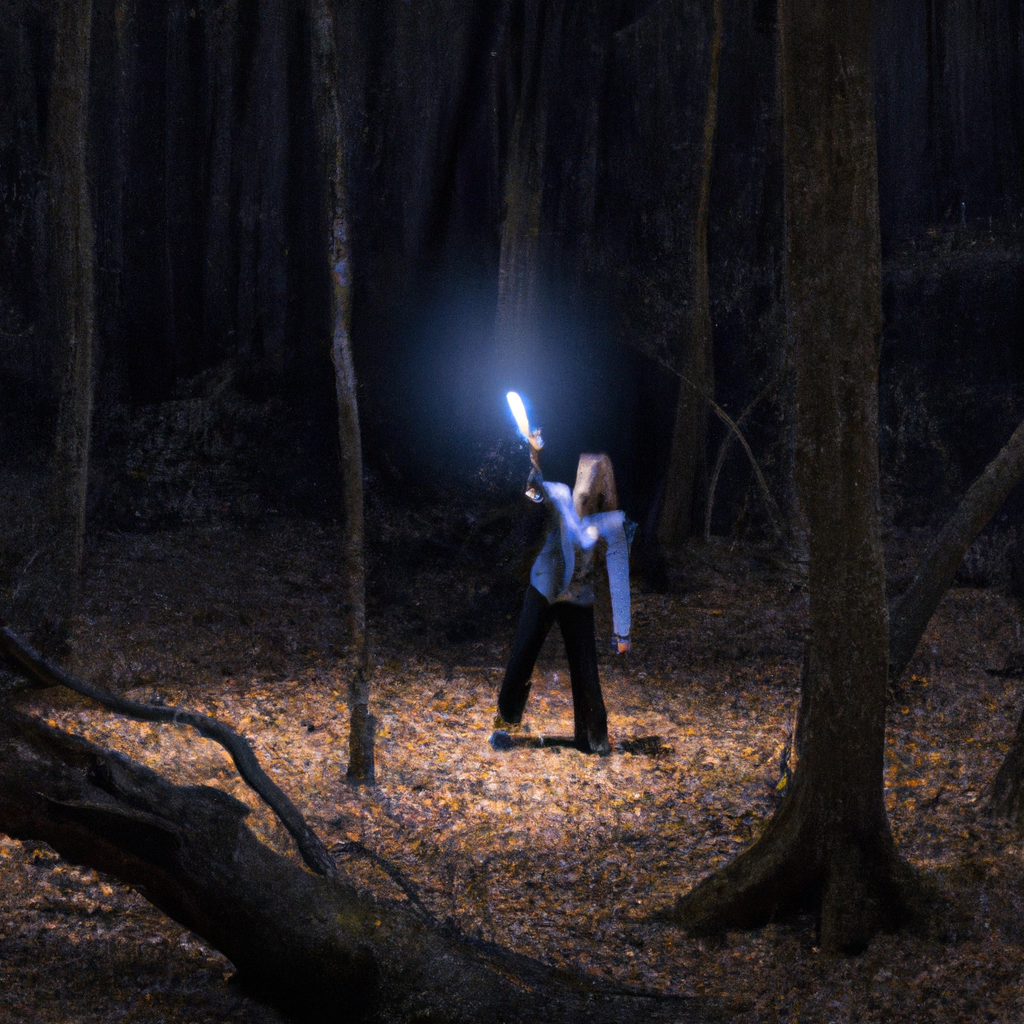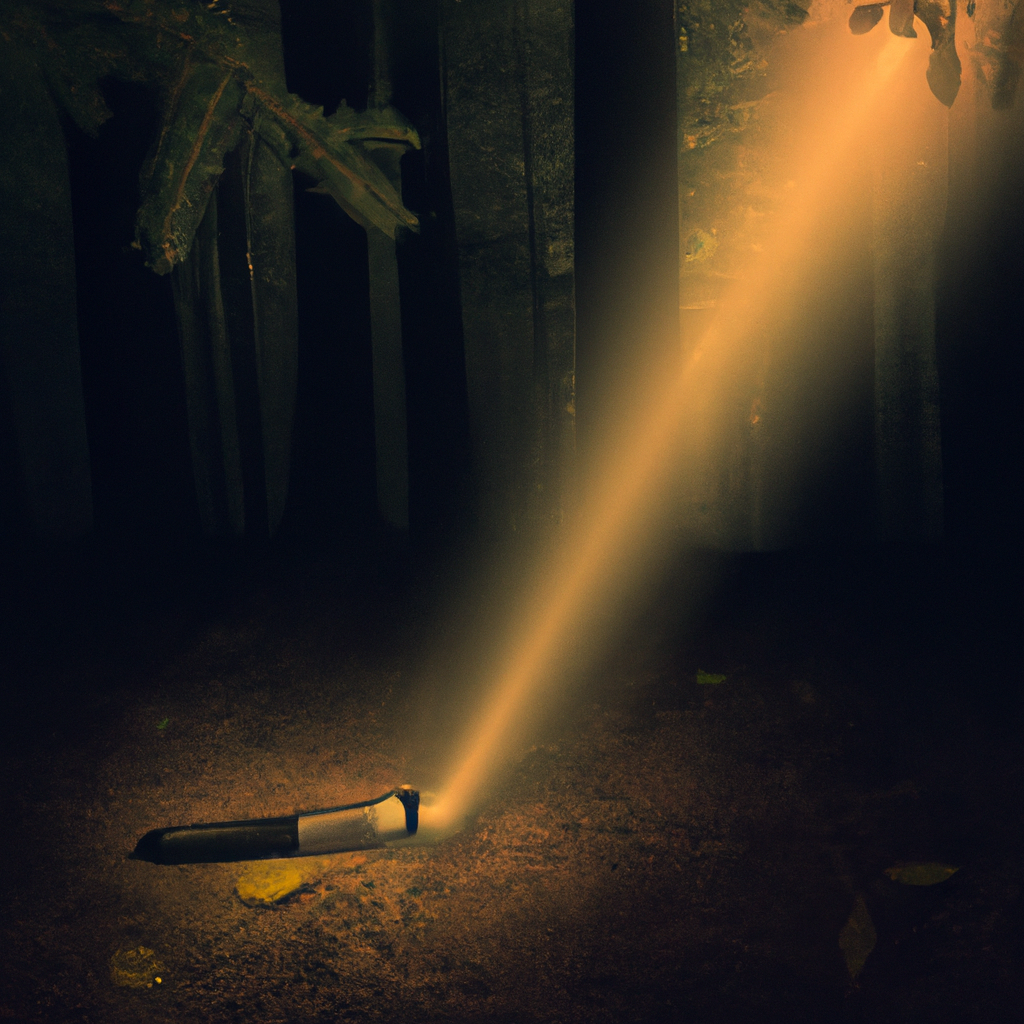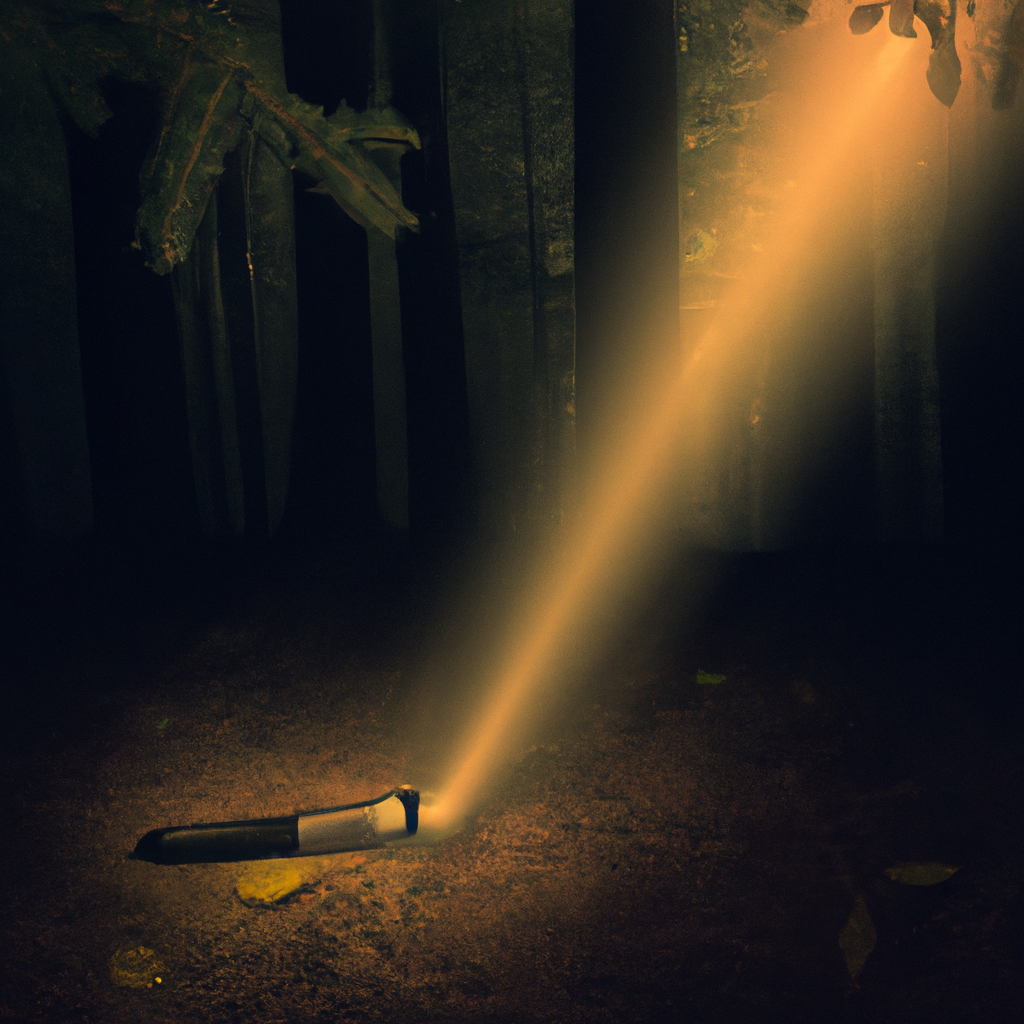When you’re out in the wilderness, enjoying the freedom and beauty of nature, the last thing you want is an unexpected emergency or injury to ruin your experience. But accidents happen, and it’s crucial to be prepared for any mishaps that may occur during your camping trip. From minor cuts and scrapes to more serious incidents, knowing the best way to handle a camping emergency or injury can make all the difference in ensuring a safe and successful outdoor adventure. So, let’s explore some essential tips and strategies that will help you navigate these challenging situations with confidence and ease.
Assessing the Situation
Stay Calm and Evaluate the Situation
When faced with a camping emergency or injury, it’s crucial to stay calm and evaluate the situation. Panicking can hinder your ability to think clearly and make sound decisions. Take a deep breath and assess the surroundings to determine the nature of the emergency and any potential dangers.
Determine the Severity of the Emergency or Injury
After calming yourself, it’s important to determine the severity of the emergency or injury. Assess the injured person’s condition by checking for responsiveness, breathing, and any visible signs of injury. If the situation is life-threatening, immediate action is necessary. However, if the injury is minor, you can provide first aid while waiting for professional help.
Call for Help and Provide Information
Once you have assessed the situation and determined the severity of the emergency or injury, it’s crucial to call for help. Contact emergency services and provide clear and concise information about the situation, including the location and any hazards present. Be prepared to answer questions and follow any instructions given by the emergency dispatcher.
First Aid and Immediate Actions
Manage Bleeding and Control Wounds
In the event of bleeding or open wounds, it’s important to manage the bleeding and control the wound to prevent further complications. Apply direct pressure to the wound using a clean cloth or your hands if necessary. Elevate the injured area if possible and apply a sterile dressing or bandage to protect the wound from infection.
Perform CPR and Rescue Breathing if Necessary
If someone is unresponsive and not breathing, it may be necessary to perform cardiopulmonary resuscitation (CPR) and rescue breathing. Start with chest compressions to help restore blood circulation, followed by rescue breaths to provide oxygen. It’s important to learn proper CPR techniques before embarking on a camping trip to be prepared for such emergencies.
Stabilize Fractures and Sprains
In the case of fractures or sprains, it’s essential to stabilize the injured limb to prevent further damage and alleviate pain. Immobilize the affected area using splints or improvised materials such as sticks and bandages. Take care to support the joint above and below the injury to minimize movement and discomfort.
Handle Burns and Heat-Related Issues
Burns and heat-related issues can occur during camping trips, especially when handling fire or exposed to extreme temperatures. For minor burns, cool the area with cold water or a cold compress. If the burn is severe or covers a large area, seek medical attention immediately. Additionally, heat-related issues like heatstroke require immediate medical intervention and should be treated by professionals.
Address Poisoning or Allergic Reactions
In the unfortunate event of poisoning or allergic reactions, it’s important to act promptly to minimize harm to the affected person. If the person has ingested a potentially poisonous substance, contact emergency services or a poison control center immediately for guidance. In the case of allergic reactions, administer any prescribed medication such as epinephrine if available and seek medical help without delay.
Manage Eye and Ear Injuries
Eye and ear injuries can occur while camping, often due to foreign objects or trauma. If something gets into the eye, avoid rubbing the eye and gently flush it with clean water. If the object remains lodged or there is severe pain, seek medical assistance. Similarly, if there are signs of ear injury or severe pain, it’s best to consult a healthcare professional for proper assessment and treatment.
Treat Insect Bites and Stings
Insect bites and stings are common while spending time outdoors. To treat such incidents, carefully remove any visible stingers using a tweezer or by scraping it gently with a credit card. Clean the area with soap and water, and apply a cold compress or a topical antihistamine to reduce swelling and itching. If there are signs of a severe allergic reaction, seek immediate medical attention.
Handle Hypothermia or Heatstroke
Both hypothermia and heatstroke can pose serious risks to campers. Hypothermia occurs when the body loses heat faster than it can produce, primarily in cold environments. To address hypothermia, move the person into a warm shelter, remove wet clothing, and cover them with blankets or warm clothes. Heatstroke, on the other hand, is the body’s inability to regulate its temperature properly, often caused by prolonged exposure to high temperatures. If someone is showing signs of heatstroke, move them to a cool area, remove excess clothing, and provide them with fluids while seeking immediate medical attention.

Contacting Emergency Services
Know How to Signal for Help
In certain camping scenarios, knowing how to signal for help can be lifesaving. Common distress signals include shouting, blowing a whistle, or using bright-colored objects like clothing or tarps to attract attention. It’s important to familiarize yourself with recognized distress signals before embarking on a camping trip, as they can vary depending on the region or situation.
Use a Satellite Phone or Emergency Radio
Having a reliable means of communication in remote areas is crucial for contacting emergency services. Satellite phones or emergency radios can provide a direct line to help, even in areas with no cellphone reception. These devices should be fully charged and included in your camping essentials to ensure you can reach out for assistance when needed.
Provide Clear Information and Location Details
When contacting emergency services, it’s vital to provide clear and accurate information regarding the situation and your location. Be prepared to provide details such as the nature of the emergency, the number of people involved, any known injuries, and landmarks or GPS coordinates that can help responders locate you quickly. Providing this information concisely and accurately can expedite the arrival of help.
Creating a First Aid Kit
Essential Items for a Camping First Aid Kit
Having a well-stocked first aid kit is essential for any camping trip. Here are some basic items to include:
- Adhesive bandages of various sizes
- Sterile gauze pads and adhesive tape
- Antiseptic wipes or solution
- Tweezers and scissors
- Disposable gloves
- Pain relievers
- Antihistamines for allergic reactions
- Topical ointments for burns and insect bites
- Emergency blanket
- CPR mask or pocket mask
Additional Items for Specific Conditions or Activities
Depending on your specific needs and the nature of your camping trip, you may want to include additional items in your first aid kit. For example, if you are prone to blisters, including moleskin or blister pads can be beneficial. If you are camping in a high-altitude area, consider carrying medication for altitude sickness. Tailor your first aid kit to your unique circumstances to ensure you are well-prepared for any potential emergencies.

Preventing Camping Emergencies and Injuries
Plan and Prepare Adequately
Proper planning and preparation are key to preventing camping emergencies and injuries. Research the area you will be camping in, including its weather conditions and any potential hazards. Create a detailed itinerary and communicate it to someone who is not going on the trip. Pack necessary equipment and supplies, and ensure you have the appropriate permits or permissions for your chosen camping location.
Choose Safe Campsites and Set Up Camp Properly
Selecting a safe campsite and setting up your camp correctly is essential for minimizing the risk of accidents or injuries. Look for level ground, away from potential hazards like dead trees or rocky terrain. Clear the area of any debris or potential trip hazards before pitching your tent. Additionally, be mindful of setting up camp away from bodies of water to avoid the risk of drowning or flash floods during inclement weather.
Minimize Fire Hazards and Handle Emergencies
Campfires are a common part of camping trips, but they can also present fire hazards. Follow established fire safety guidelines, such as clearing a safe area around the fire pit and never leaving a fire unattended. Have a fire extinguisher or an ample water source nearby for emergencies. It’s also essential to know how to handle small fire-related emergencies, such as extinguishing a small flame or treating minor burns.
Practice Proper Food Handling and Prepare for Allergies
Proper food handling is crucial for preventing foodborne illnesses while camping. Store food properly to avoid contamination from animals or insects, and use coolers with ice or ice packs to maintain safe temperatures. If any members of your camping group have known food allergies or dietary restrictions, ensure you are prepared with suitable alternatives and have the necessary medications on hand in case of an allergic reaction.
Stay Hydrated and Protect Against Extreme Weather
Staying hydrated is essential while camping, especially during hot weather or strenuous activities. Drink plenty of water and avoid excessive consumption of alcohol or caffeinated beverages, as they can lead to dehydration. Additionally, protect yourself from extreme weather conditions by wearing appropriate clothing and using sun protection, such as hats and sunscreen in hot weather, or layering clothing and using insulated gear in cold weather.
Take Precautions for Wildlife Encounters
Encountering wildlife can be an exciting part of camping, but it’s important to take precautions to ensure both your safety and the animals’ well-being. Familiarize yourself with the local wildlife and understand how to safely interact with them, such as properly storing food to avoid attracting animals to your campsite. Keep a safe distance and never approach or feed wild animals. By respecting wildlife and their habitats, you can prevent potential injuries or dangerous situations.
Follow Safe Hiking and Outdoor Activity Practices
Camping often involves engaging in outdoor activities such as hiking, swimming, or climbing. To minimize the risk of accidents or injuries, it’s crucial to follow safe practices. Stay on designated trails while hiking and be cautious of rough or unstable terrain. When swimming or participating in water activities, ensure you have the necessary skills and use appropriate safety equipment like life jackets. Avoid engaging in activities beyond your skill level to prevent accidents or mishaps.
Emergency Communication and Signaling
Know How to Use Distress Signals
When faced with an emergency in the wilderness, knowing how to use distress signals can help rescue teams locate and assist you more efficiently. Common distress signals include blowing a whistle in short bursts of three, using a mirror to reflect sunlight, or building a visible and recognizable signal fire. Familiarize yourself with these signals and practice using them before your camping trip.
Carry Communication Devices and Backup Power
Carrying communication devices is essential for contacting emergency services and staying connected with the outside world during a camping emergency. Portable options such as satellite phones or emergency radios can provide reliable communication, even in remote areas with no cellphone reception. Additionally, ensure you have backup power sources like extra batteries or portable solar chargers to keep your communication devices functioning throughout your camping trip.
Establish Emergency Meeting Points and Protocols
Establishing emergency meeting points and protocols with your camping group can help streamline communication and coordination during an emergency. Identify specific locations where everyone should gather in case of separation or evacuation. Ensure that all members of the group are aware of these meeting points and protocols, making it easier to regroup and account for everyone’s safety.
Navigating Wilderness and Trail First Aid
Identify Common Wilderness Medical Issues
When in the wilderness, it’s important to be aware of common medical issues that can occur and know how to address them. These may include wildlife encounters, exposure to extreme weather conditions, water-related emergencies, or injuries resulting from outdoor activities. Understanding these potential issues can help you proactively prepare for and respond to emergencies effectively.
Manage Blisters and Foot Injuries
Blisters and foot injuries can be troublesome during camping trips, particularly when hiking or walking long distances. To manage blisters, clean the area, apply a blister pad or moleskin, and avoid popping the blister unless necessary. For other foot injuries, such as cuts or sprains, clean the wound, apply sterile dressing, and stabilize the injured foot using splints or bandages. Resting and elevating the foot can also aid in the healing process.
Handle Common Gastrointestinal Problems
Gastrointestinal issues, such as food poisoning or diarrhea, can quickly ruin a camping trip. Prevent these problems by practicing proper food handling and preparation. If symptoms occur, it’s important to stay hydrated and consume easily digestible foods. Over-the-counter medications like antidiarrheal can provide temporary relief, but if symptoms persist or worsen, seeking professional medical advice is recommended.
Treat Common Skin Issues and Rashes
Skin issues and rashes are common ailments while camping, often caused by exposure to plants, insects, or irritants. Clean the affected area with soap and water, and apply a topical ointment or cream specifically designed for the condition. Avoid scratching or further irritating the skin, as it may lead to infection. For severe or persistent skin issues, consult a healthcare professional for appropriate diagnosis and treatment.
Address Altitude Sickness and Dehydration
Altitude sickness can occur when ascending to high elevations too quickly, causing symptoms such as headache, nausea, and shortness of breath. To prevent altitude sickness, acclimatize gradually and stay hydrated. If symptoms do arise, descend to a lower elevation and rest until they subside. Similarly, dehydration can pose a risk in high altitudes or hot weather. Drink plenty of water and replenish electrolytes with sports drinks or electrolyte packets to stay properly hydrated.
Handling Special Situations and Specific Injuries
Dealing with Snake Bites and Animal Attacks
Snake bites and animal attacks, although rare, can happen during a camping trip. If bitten by a snake, keep calm, immobilize the bitten limb, and seek medical help immediately. Try to remember the snake’s appearance, as this information can assist in determining appropriate treatment. In the event of an animal attack, quickly move to a safe location, assess injuries, and contact emergency services for assistance. Following a wild animal attack, it is important to seek medical attention for assessment and any necessary treatment.
Addressing Allergic Reactions and Anaphylaxis
Allergic reactions and anaphylaxis can be life-threatening, so it’s crucial to act quickly and appropriately. If someone experiences an allergic reaction, help them administer their prescribed medication, such as an epinephrine auto-injector. Call emergency services immediately and provide clear information about the situation. Stay with the person and monitor their condition until medical help arrives.
Managing Head, Neck, and Spinal Injuries
Head, neck, and spinal injuries can have serious consequences, so proper management is crucial to prevent further damage. Stabilize the injured person’s head and neck to maintain alignment and prevent movement. Even if the person is conscious, it’s essential to keep them as still as possible until medical professionals can assess and immobilize the injuries appropriately.
Treating Eye Injuries and Foreign Body Removal
Eye injuries can occur during camping activities, and prompt treatment is essential to prevent further damage or vision loss. If an object is lodged in the eye, avoid rubbing it and seek medical attention immediately. For other eye injuries, gently flush the eye with clean water and cover it with a sterile dressing. Refrain from applying pressure or using medications without professional guidance.
Handling Near Drowning and Water-Related Emergencies
Water-related emergencies, such as near drowning or accidental submersion, require immediate action. Remove the person from the water safely and assess their responsiveness and breathing. If they are unresponsive or not breathing, begin CPR immediately and continue until medical help arrives. Even if the person appears to recover, it is essential to seek medical evaluation to ensure there are no underlying complications.
Psychological and Emotional Support
Provide Reassurance and Comfort
During a camping emergency, providing reassurance and comfort to those involved can help alleviate feelings of fear and anxiety. Encourage everyone to stay calm and assure them that help is on the way. Emphasize the importance of teamwork and support one another through the ordeal. Offering a listening ear and empathetic gestures can go a long way in providing psychological support during challenging times.
Manage Panic and Anxiety
Emergencies often induce panic and anxiety, but it’s important to manage these emotions to ensure clear thinking and appropriate actions. Utilize calming techniques such as deep breathing exercises to regulate breathing and lower anxiety levels. Encourage open communication among the camping group, allowing individuals to express their concerns and fears. Remind everyone to focus on the present and the steps being taken to address the emergency.
Address PTSD and Trauma After an Emergency
After experiencing a camping emergency, individuals may exhibit signs of post-traumatic stress disorder (PTSD) or trauma. These symptoms could include nightmares, flashbacks, or heightened anxiety. Encourage affected individuals to seek professional counseling or therapy to process their emotions and work through any trauma experienced. Offer ongoing support and understanding, as the road to recovery takes time and patience.
Learning First Aid and Safety Skills
Attend First Aid Training and Certification Courses
To be well-prepared for camping emergencies, attending first aid training and certification courses is highly recommended. These courses provide hands-on training and teach the necessary skills to handle various injuries and emergencies. Learning CPR, proper wound management, and other essential techniques can make a significant difference in saving lives or preventing complications until professional help arrives.
Refresh Skills Regularly and Stay Updated on Guidelines
Just like any skill, first aid proficiency requires practice and regular refreshing. Set aside time to review your first aid skills periodically, especially before embarking on a camping trip. Stay updated on the latest guidelines and recommendations provided by reputable organizations such as the American Red Cross or the Wilderness Medical Society. This ensures that your knowledge is current and aligned with the best practices in first aid and safety protocols.
Practice Emergency Scenarios and Mock Drills
Practicing emergency scenarios and conducting mock drills with your camping group can improve readiness and response during actual emergencies. Create scenarios that reflect the potential risks of your camping trip and practice the steps needed to address each situation. By rehearsing these scenarios, everyone becomes familiar with their roles and responsibilities, ensuring a more coordinated and efficient response in real-life emergencies.
By following these comprehensive guidelines and being prepared for potential camping emergencies, you can enjoy your outdoor adventures with greater peace of mind. Remember to prioritize safety, stay aware of your surroundings, and always be prepared to respond effectively in any situation. Happy camping!

